Andy Thibault's Blog, page 18
September 8, 2016
NEW: RFK Jr. says ‘recent forensic evidence’ points to two shooters in his father’s assassination
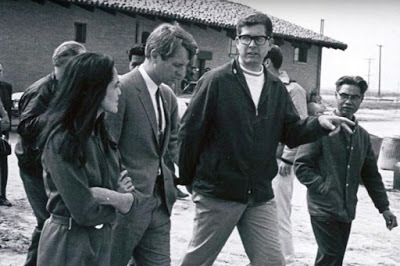
Robert F. Kennedy flanked by union organizers Dolores Huerta (left) and Paul Schrade (right). Huerta co-founded what would become the United Farm Workers. Schrade, also a union organizer, was one of five others wounded when RFK was assassinated in 1968.
- Photo courtesy of Mexican American Legal Defense and Educational Fund
Cool Justice:
RFK Jr. points to forensic evidence of second gunman in his father’s assassination
By Andy Thibault
Buried on page 271 of Robert F. Kennedy Jr.’s new book on the Skakel murder case in Greenwich is a quick, but telling reference to his father’s assassination.
As part of my summer reading I highlighted the passage. I had a visceral sense it was important.
Kennedy family members rarely have spoken publicly about the assassinations of either President John Kennedy or U.S. Sen. Robert Kennedy, much less criticized the official findings. The passage is noteworthy for the simple fact it is memorialized in a book. It is not just a comment in an interview.
This angle deserves serious attention, and so it wasn’t shoehorned into the column published Aug. 5 on the Greenwich murder case, “COOL JUSTICE: RFK Jr. attacks prosecutors, cops, courts for willful misconduct as he asserts cousin Skakel’s innocence.”
Aug. 5 column
Some of Kennedy’s claims and his book investigating the murder of 15-year-old Martha Moxley in Greenwich in 1975 have been panned by the state Judicial Department and other authors who chronicled the case. A state Supreme Court ruling on whether Skakel will face a retrial or be sent back to prison is expected this fall. A senior judge ruled in 2013 that Skakel did not receive a fair trial when he was convicted of the Moxley murder in 2002. Skakel was freed on bond after serving 11 years of a sentence of 20 years to life in jail.
That covers a lot of ground, and the next court decision will be big news. It seems to me the “footnote” on page 271 also is big news.
Following are two paragraphs from Kennedy’s book, “Framed, Why Michael Skakel Spent Over A Decade In Prison For A Murder He Didn’t Commit,” leading up to the clincher paragraph on the RFK assassination:
 “I sympathize deeply with Dorthy Moxley [Martha’s mother]. I have seen up-close the agony of a mother’s grief over the loss of her child. my mother lost her husband to murder and two of her sons to violent, untimely deaths in the bosom of their youth. I was with her when my father died. I stood beside her 29 years later as my little brother Michael died in her arms.
“I sympathize deeply with Dorthy Moxley [Martha’s mother]. I have seen up-close the agony of a mother’s grief over the loss of her child. my mother lost her husband to murder and two of her sons to violent, untimely deaths in the bosom of their youth. I was with her when my father died. I stood beside her 29 years later as my little brother Michael died in her arms. “My mother told us that we needed to let go of our impulse for revenge and allow the cycle of violence to end with our family. This, she said, was the lesson of the New Testament, which swapped the savage eye-for-an-eye tribalism of the Old Testament for the ethical mandate that we turn the other cheek. But forgiveness wasn’t just ethics. It was salutary. Revenge and resentments, my mother said, are corrosive. Indulging them is like swallowing poison and hoping someone else will die. By opposing the death penalty for Sirhan, we diluted these poisonous passions.
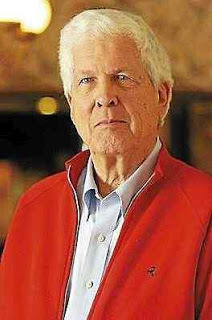 “And what if, God forbid, the object of our revenge turns out to be innocent? For several decades, my father’s close friend Paul Schrade [in recent photo, right], who took one of Sirhan’s bullets, has argued that Sirhan Sirhan did not fire the shot that killed my father. Recent forensic evidence supports him. How would we have felt now, if our family had demanded his execution?”
“And what if, God forbid, the object of our revenge turns out to be innocent? For several decades, my father’s close friend Paul Schrade [in recent photo, right], who took one of Sirhan’s bullets, has argued that Sirhan Sirhan did not fire the shot that killed my father. Recent forensic evidence supports him. How would we have felt now, if our family had demanded his execution?” Like most Americans, I had not paid much attention to the forensic details regarding the RFK murder. What kind of evidence was RFK Jr. referring to? What is the significance of his dropping this tidbit toward the end of a book on another subject?
Robert F. Kennedy was shot just after midnight on June 5, 1968 in the back and in the back of the head at the Ambassador Hotel in Los Angeles. He had been celebrating his California primary win in his campaign for the Democratic nomination for president. Kennedy had become a vigorous opponent of the Vietnam War and an advocate for civil rights, unions and racial justice. His death came just two months after the murder of Rev. Martin Luther King Jr.
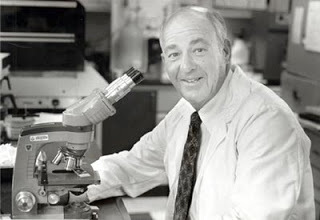 The renowned forensic pathologist and medical school professor, Dr. Cyril Wecht, assisted Los Angeles Chief Medical Examiner Dr. Thomas Noguchi in efforts to secure the Kennedy body and perform the autopsy. I reached out to Wecht this week to talk about the new Kennedy statement and the evidence cited by Paul Schrade and others.
The renowned forensic pathologist and medical school professor, Dr. Cyril Wecht, assisted Los Angeles Chief Medical Examiner Dr. Thomas Noguchi in efforts to secure the Kennedy body and perform the autopsy. I reached out to Wecht this week to talk about the new Kennedy statement and the evidence cited by Paul Schrade and others. Regarding Robert Kennedy Jr.’s statement in the new book, Wecht commented: “I think it’s commendable. I wish he had done it sooner.”
Complete column at Litchfield County Times
Also at:
New Haven Register
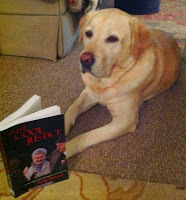
more COOL JUSTICE
Via @NorwichBulletin #moreCOOLJUSTICE @ #SpraguePublicLibrary 9-22-16 #TrueCrime All Sides of the Law

Recent column: Judges who played role in murder probe squelched access to key testimony
Cool Justice Blog
Published on September 08, 2016 15:21
September 3, 2016
Via @NorwichBulletin @HartfordCourant #moreCOOLJUSTICE @ #SpraguePublicLibrary 9-22-16 #TrueCrime All Sides of the Law

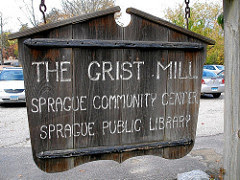 Sprague Public Library to host
Sprague Public Library to host private investigator, author
Andy Thibault
By Staff reports
Andy Thibault, a private investigator and author of the award-winning collection of newspaper columns “More Cool Justice,” will read from his work at 6:30 p.m. Sept. 22 at the Sprague Public Library, 76 Main St., Baltic.
Complete article @ Norwich Bulletin
The opening chapter of "more COOL JUSTICE," Breaking Bonnie Out, features columns that led to a clemency hearing and freedom for Bonnie Foreshaw, who had been unjustly imprisoned for premeditated murder. The book also contains essays on other controversial cases, some in Connecticut.
Hartford Courant book notes, 2nd to last item
Sprague Public Library
--

more COOL JUSTICE

Recent column: Judges who played role in murder probe squelched access to key testimony
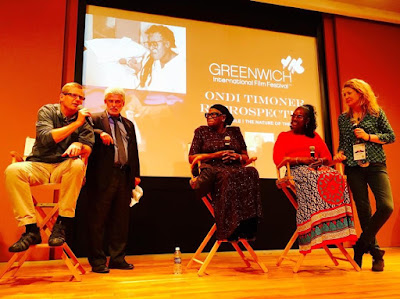
Greenwich International Film Festival, Summer 2016
Cool Justice Blog
Published on September 03, 2016 05:04
Via @NorwichBulletin #moreCOOLJUSTICE @ #SpraguePublicLibrary 9-22-16 #TrueCrime All Sides of the Law

 Sprague Public Library to host
Sprague Public Library to host private investigator, author
Andy Thibault
By Staff reports
Andy Thibault, a private investigator and author of the award-winning collection of newspaper columns “More Cool Justice,” will read from his work at 6:30 p.m. Sept. 22 at the Sprague Public Library, 76 Main St., Baltic.
Complete article @ Norwich Bulletin
Sprague Public Library
--

more COOL JUSTICE

Recent column: Judges who played role in murder probe squelched access to key testimony

Greenwich International Film Festival, Summer 2016
Cool Justice Blog
Published on September 03, 2016 05:04
September 2, 2016
Judges who tanked transcripts played role in Badaracco case & served w/ grand jury leakers
Flunking the wicked smelly skunk test:
CT judges / prosecutors & Badaracco homicide

Cool Justice:
How judges & prosecutors circle the wagons to shaft public, protect themselves
By Andy Thibault
What a coincidence.
Two of the judges who ruled in 2012 to keep grand jury testimony secret in the Mary Badaracco homicide not only signed warrants in the case, they also served with fellow judges who participated in the leak of grand jury information to the prime murder suspect in 2010.
In this regard, judges Jon Alander and Hillary Stackbein flunked the wicked smelly skunk test. Their apparent conflict of interest looks bad, smells bad and is really bad. Why would any rational citizen have reason to believe that Alander and Stackbein upheld the integrity of their office in this heinous case?
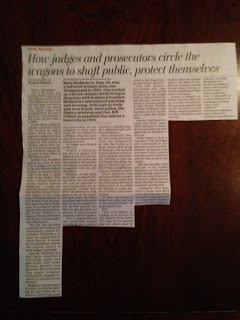 Alander and Stackbein appear on a list of more than 15 judges who served in the New Britain Judicial District in October 2010. That is the time in which then Judge Robert Brunetti – a former lawyer for murder suspect Dominic Badaracco – sought and received secret grand jury information during a lunch with judges at The Great Taste Chinese restaurant in New Britain. That information made its way to Badaracco in a series of conversations also involving Ronald “Rocky” Richter – a boyhood friend of Brunetti and former business partner of Badaracco.
Alander and Stackbein appear on a list of more than 15 judges who served in the New Britain Judicial District in October 2010. That is the time in which then Judge Robert Brunetti – a former lawyer for murder suspect Dominic Badaracco – sought and received secret grand jury information during a lunch with judges at The Great Taste Chinese restaurant in New Britain. That information made its way to Badaracco in a series of conversations also involving Ronald “Rocky” Richter – a boyhood friend of Brunetti and former business partner of Badaracco. The list was provided promptly this week by the Connecticut Judicial Department ...
Complete column at Litchfield County Times
Also at:
New Haven Register

Last week’s column: How to ignore basics in a homicide #Badaracco
--

more COOL JUSTICE
Cool Justice Blog
Published on September 02, 2016 11:47
August 27, 2016
How to ignore basics in a homicide #Badaracco
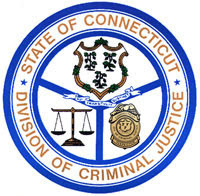
Cool Justice:
In which the most important questions about a homicide are ignored or deflected
By Andy Thibault
“Art, what brings you to New Britain?” the lunch date asked.
This was no ordinary lunch, or so it would seem.
This was a gathering of state judges at The Great Taste Chinese restaurant in New Britain sometime in October 2010. The object of the inquiry, Judge Arthur Hadden, was presiding over a secret grand jury investigation into the killing of a battered woman, Mary Badaracco of Sherman, in 1984.
The person inquiring was then-Judge Robert Brunetti, a former lawyer for the prime suspect in the Mary Badaracco slaying -- her ex-husband -- Dominic Badaracco.
Another judge said of Hadden: “He’s sitting on a grand jury ...
Complete column via Litchfield County Times


Last week’s column: Prosecutors Won’t Pursue #Badaracco #Homicide Because Too Many Powerful People Would Fall
--

more COOL JUSTICE
Cool Justice Blog
Published on August 27, 2016 10:36
August 15, 2016
Prosecutors Won’t Pursue #Badaracco #Homicide Because Too Many Powerful People Would Fall

Cool Justice:
Pretend investigations the norm in Badaracco homicide for 32 years
By Andy Thibault
State police bosses proclaimed this month that the Mary Badaracco homicide case is active.
Don’t believe it for a second. No one is actively pursuing the case.
Why? Too many powerful people would fall.
For starters, there are the judges from the New Britain judicial district who witnessed and participated in the 2010 leak of grand jury information to a long-time golfing pal and business associate of murder suspect Dominic Badaracco, the victim’s ex-spouse. The person who sought, received and passed on that information – Robert Bruentti – was also a judge at the time. Brunetti has since retired with a full pension.
None of the judges were prosecuted.
Hartford Courant columnist Rick Green asked at the time why Brunetti waited weeks before he contacted the state police and the state’s attorney about the calls he was getting for grand jury information ...
Complete column via Litchfield County Times
--

more COOL JUSTICE
Cool Justice Blog
Published on August 15, 2016 11:45
August 13, 2016
The First Choir Practice, A Prequel
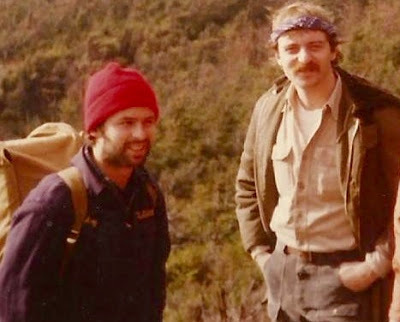
Unidentified Choir Practice Brothers on Assignment for The Rose City Bugle, circa 1975
- photo by Tall Hound Cracker, Rose City Bugle
Zoners: Keep Out The Trailer Parks
By Andy Thibault
Editor’s Note: Some of Thibault’s imaginary friends and events recalled at The River City Bugle are real. We are not sure which ones are which. When we last left The Choir Practice Diaries, our front-page editor The Snake had broken up a fight between two eager suitors of a page designer with a diversion employing unique massage maneuvers and oils.
Heroic Snake Flashback
The original statement by the zoning official quoted in this column was a racial epithet. Sometimes at The Bugle it was easier than it is today to report what people actually said and did.
RIVER CITY – The dude, 6-1, 180, reddish brown hair, freckles and a well-rounded beak, pounded his way through the glass door. Luckily or not, the knob was turned and the door didn’t break.
He wore a gray trench coat and it flapped in the wind off a polluted river treated with chemicals that smelled like gas.
It was a spring night in 1970s suburbia and I was stuck in this breadbox of an outlying office of the River City Bugle, filling in for the regular guy on vacation. This was back in the days when medium size daily newspapers had regional offices serving many communities with staff dedicated to their information needs.
“How’s the Scanatron working? I’ve got something hot,” the dude said. His name was Harry. He had just run from a zoning meeting at the Town Hall. Who wouldn’t run from a zoning meeting? That’s like taking the gaspipe ...
Complete column at Litchfield County Times
Tweet
First Three Installments, Choir Practice Diaries
THE SNAKE AND THE WATERMELON
THE LEGEND OF THE SNAKE AND HIS GIFT TO HUMANITY
THE SNAKE AS PEACEMAKER IN A VIOLENT NEWSROOM
--

more COOL JUSTICE
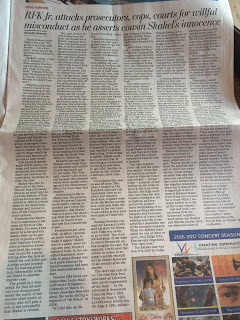
Last week’s column: Skakel case overview
Cool Justice Blog
Published on August 13, 2016 05:21
August 5, 2016
#SkakelTrial Status in #GreenwichMoxleyMurder Re-Examined
#CoolJustice Returns to the Pages of #DigitalFirstMedia in #CT
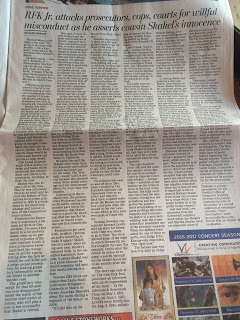
EDITOR'S NOTE:
The Cool Justice column ran in the group's papers -- including The Litchfield County Times, New Haven Register, Torrington Register Citizen, Middletown Press and West Hartford News -- from 2012-2014, earning honors including the Connecticut Council on Freedom of Information’s Stephen A. Collins Award for “many contributions to the cause of open and accountable government and a free and vigorous press in Connecticut."

#CT Courts’ #CirqueduSoleil Performance for #SkakelTrial in #Moxley Murder
RFK Jr. attacks prosecutors, cops, courts
For willful misconduct
As he asserts cousin Michael Skakel’s innocence
In Martha Moxley murder
By Andy Thibault
Michael Skakel most likely never said, “I’m going to get away with murder – I’m a Kennedy,” while held at the infamous Elan School in Maine.
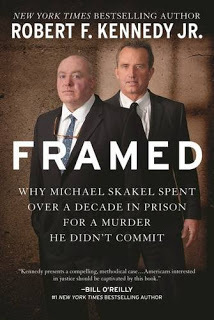
Skakel’s cousin – Robert F. Kennedy Jr. – demonstrates this finding beyond any reasonable doubt in his new book, “Framed, Why Michael Skakel Spent Over A Decade In Prison For A Murder He Didn’t Commit.”
Debunking the false quote is crucial to an understanding of various investigations into the murder of 15-year-old Martha Moxley on Halloween Eve 1975 in Greenwich, Connecticut.
Moxley was bludgeoned with a Skakel family golf club and found lying face down with her pants and underwear at her ankles in the seaside Belle Haven neighborhood. She was stabbed in the neck with the golf club shaft. There was no physical evidence linking Skakel to the case. Initially, he was not a suspect. Over the years, he was just one of many.

Skakel and Moxley socialized with a large group of energetic teenagers who had easy access to alcohol. Her diary reports many would-be suitors and dances and parties in some detail.
The hyped Kennedy angle fueled media coverage and books which pressured law enforcement and courts to do something, anything, to close the case.
Skakel was also 15 years old at the time...
Complete column
Tweet
NY Times, July 2016

NBC Dateline, July 2016
Tony Bryant interview with investigators Vito Colucci, Al Dressler [filming]
Part One
Part Two
--

more COOL JUSTICE
Cool Justice Blog
Published on August 05, 2016 21:29
July 28, 2016
Beaver Creek Fire Heated Up This Week Near Colorado-Wyoming Border
Fire Initially Detected June 19

Home Sweet Home For Some Firefighter Crews
Tweet

A View This Week Between Double-Plus Shifts...
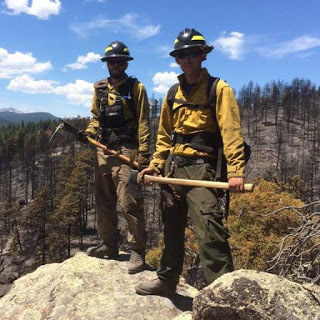
- photos above by Wildland Firefighter / Fuels Mitigation Crew Member Marcus Thibault of Lefthand Fire Protection District. Boulder, Colorado, seen here at another site w/ friend & colleague Jeff Rath
Incident Overview
Via InciWeb, the national incident information system for wildfires and all-hazard incidents
The Beaver Creek Fire was detected on Sunday, June 19 at 12 p.m. The point of origin is approximately 24 miles northwest of Walden Colorado. On Thursday June 23, the Rocky Mountain Type 2 Blue Team assumed command of the Beaver Creek Fire. The Blue Team transferred command of the fire on July 7, to the Western Colorado Interagency- Type 3 Incident Management Team (IMT). As of July 20th, Jon Warder’s Type 3 Incident Management Team assumed command of the fire.
The fire is burning in heavy beetle killed timber ...
Overview continues
UPDATE:

Travel mag updates Beaver Creek Fire
Cool Justice Blog
Published on July 28, 2016 08:22
June 16, 2016
ICYMI #TheNatureOfTheBeast Preview @greenwichfilm Download @InterloperFilms Background #moreCOOLJUSTICE
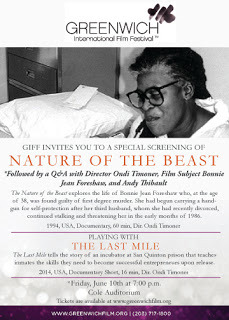
Sweet download deal, The Nature of The Beast
PRISON MINISTRY BLOG POST:
Re-posted via Progressive Prison Project
Tweet
The Beast AKA The Court System Unchecked: Lies & Cover-Ups
Or:
Fake drug raid based on dreads, baking soda in frig
crippled defense of battered woman in accidental shooting
By Andy Thibault -- Guest Blogger
GREENWICH -- Here's how it works:
The worst prosecutors and the worst cops see a big score. They see advancement. They see acclaim.
They see it nice and easy when the defendant is a black woman from Hartford.
Bonus: She's a Rastafarian.
Some relatives and friends have dreadlocks. She has dreadlocks!
The family -- as any household might -- keeps some baking soda in the refrigerator.
In Hartford, this makes it nice and easy to cook up phony evidence and phony drug charges. This makes it real smooth to seize her house. This makes it oh so easy to destroy her defense.
This is 'The Nature of The Beast.'
'The Nature of The Beast' is also a documentary film about the early years of the Bonnie Foreshaw case. The film, directed by then Yale student Ondi Timoner, premiered on PBS in 1994. It will be shown again for the first time since 1994 at the Greenwich International Film Festival at 7 p.m. Friday, June 10 at the Greenwich Public Library. Tickets are available via the film festival website,http://www.greenwichfilm.org/.
The film chronicles the state of Connecticut's blood lust to pursue the death penalty against a battered woman for an accidental and fatal shooting in 1986. It clearly details violations of her right to counsel and a fair trial. The film exposes how cops and prosecutors got away with jacking up charges to premeditated murder in a textbook manslaughter case.
Typically, a manslaughter conviction could result in about 10 years in prison. Foreshaw, drugged by the state during her show trial and virtually ignored by her incompetent lawyer, would get the longest sentence of any woman in Connecticut history up to that point -- 45 years.
“I was sure my film would force the powers-that-be to release Bonnie back in 1994, but the film went on PBS and nothing happened,” Timoner wrote in the prologue to 'more COOL JUSTICE,' my second collection of newspaper columns which features the Foreshaw case.
“I realized people weren’t watching documentaries in the early ’90s so I went to Los Angeles to try to get a TV movie made to reach people and start a movement,” Timoner said, “but I was told the story was too controversial.”
Foreshaw ended up serving 27 and a half years on a charge of premeditated murder of a woman she had never met.
Foreshaw wrote of her remorse in a volume of redemptive memoirs, 'Couldn’t Keep It To Myself,' edited by the novelist Wally Lamb: “I never lost sight of the fact that I still had my life and Joyce Amos, the lady who tried to help me that night, had lost hers. She had been someone's mother and someone's daughter, same as me. A powerful sadness was closing in. I began to ask myself how I could survive – or if I even wanted to ... ”
While in jail, Foreshaw was a surrogate mother and grandmother to many troubled women and teen-age girls. She was active in Literacy Volunteers, Alternatives to Violence and the Hospice Program. Guards called her a model inmate and a source of wisdom.
She was granted a clemency hearing in 2013 and ultimately freed after Digital First Media published a Cool Justice column with a memo called The Blue Note by former public defender Jon Blue — now a Superior Court judge. Blue and others argued the proper charge for the accidental shooting should have been manslaughter.
In the memo, suppressed for 24 years, Blue said, "The two most flagrant aspects of his [the fellow public defender's] representation were a failure to challenge a highly questionable confession and a failure to present an effective mental state defense."
During a series of abusive relationships dating back to her childhood, Foreshaw was raped, hit repeatedly on the head with a baseball bat and stabbed in the neck.
"A great deal of [this] relevant material was never produced [at trial] at all," Blue wrote. "No friends or family who knew Mrs. Foreshaw testified. A former husband had beaten Ms. Foreshaw on the head with a baseball bat ... and she had spent two weeks in the hospital. No hospital records were produced. Ms. Foreshaw had three failed marriages ending in domestic violence and divorce. No divorce or police records were produced. After she got out of the hospital, she had 'head problems' and went to see a neurologist. No neurologist was produced. The neurologist referred her to two different psychiatrists, who saw her a number of times. Neither of these psychiatrists was produced ... The end result was that the jury learned little or nothing about Ms. Foreshaw and what was really happening in her mind. She did not have an effective defense." More than two dozen lawyers had worked on Foreshaw's case since her arrest in 1986. Originally she was represented by a private attorney who dumped her because of her limited ability to pay. At the time, Foreshaw was a shop steward at a factory, owned a home and cared for three children. The original attorney had filed a motion to suppress a statement she gave under duress. Her statement, Blue noted, ends with the following sentence: "Det. Murdock has [advised] me of my rights I don't wish to [waive] my rights and sign this statement."
"No questions whatsoever were ever asked about this," Blue wrote.
The public defender, Blue wrote, "unaccountably withdrew the [suppression] motion immediately before the officer who had obtained the confession, John Murdock, began to testify."
Foreshaw had been taken into custody shortly after midnight on March 27, 1986.
"Officer Murdock," Blue wrote, "related that he began to interview Ms. Foreshaw at approximately 2 - 2:30 a.m. She wrote her statement out by hand but didn't sign it. The statement was introduced as a full exhibit and read to the jury, all without objection. The statement begins with a notation that it was started at 7 a.m. and finished at 7:30 a.m. What happened during the intervening 5 hours we do not know because Mr. O'Toole asked not one question about this interval, in spite of the fact that at least some innocent people might confess to killing their own mothers after being interrogated between 2 and 7 in the morning."
Timoner resumed her coverage of the case during and after the clemency hearing. She had gone on to win the Grand Jury Prize at the Sundance Film Festival twice: for 'DIG!' and 'We Live In Public.' Timoner, whose 'BRAND: A Second Coming,' had its TV premiere on Showtime last month, will host a question-and-answer session after the screening of 'The Nature of the Beast' at the GIFF.
'The Nature of The Beast' also exposes how cops and prosecutors concocted the fake drug story which allowed the federal government to place a lien on her house.
Former Bloomfield Police Sgt. Richard Cousins states in the film that cops received a tip.
This so-called tip was used to cripple Foreshaw's defense. It demonstrates the laxity or corruption of judges who approve warrants with no actual basis for probable cause.
The tip, Cousins said, was that there was a lot of cocaine and guns at the Foreshaw house and Rastafarians with Jamaican accents and dreadlocks.
Wow, better watch out for those dreads.
One of Foreshaw's daughters was in the house when Cousins said no one was home. Witnesses saw cops with guns pointed at each window of the house as they broke down the back door.
"We got a lot of evidence of big time drug trafficking," Cousins said.
What did cops find? They found baking soda in the refrigerator.
Under federal forfeiture laws, for no good reason the burden of proof is on the accused. The Foreshaw family had to pay upwards of $90,000 to get the house back, thereby depleting any money for a competent lawyer.
The state would refuse again and again to appoint a special public defender with homicide trial experience.
The beatdown escalated in this Jim Crow court system. Cops and prosecutors suppressed crucial evidence about their main witness.
Their main witness, Hector Freeman, was the man who harassed Foreshaw, followed her out of a social club and threatened to "fuck her up" after she rebuffed his entreaties to buy her a drink.
Freeman pursued Foreshaw, would not leave her alone, followed her to her car. Freeman asked why Foreshaw thought she was “too good for a drink” with him. Freeman said again and again he was going to fuck her up. Freeman came toward her, he reached into his pocket. Foreshaw feared Freeman was going to pull a knife or a gun. Instead, Freeman pulled a pregnant woman in front of him.
Foreshaw, then age 38, simultaneously fired her gun. She hit the pregnant woman who died. That woman, Joyce Amos, was used as a human shield after trying to restrain Freeman.
The prosecution conveniently failed to disclose that Freeman had pending charges for assault of a police officer. A judge ruled Freeman's tainted testimony was just fine. That’s the way it works when the forces of the state want a conviction for an inflated charge regardless of the facts.
Blue wrote in another memo Freeman had a substantial history of assaults, including more than one against police officers: "It should have been shown that due to his menacing gestures and the fact that he followed the defendant to her car, his behavior was consistent with his history of violence and was sufficient provocation to cause a violent reaction or over-reaction from a person suffering from PTSD [Post Traumatic Stress Disorder]."
A psychiatrist says in 'The Nature of The Beast' Foreshaw was hyper-vigilant as a battered woman with PTSD, but that Judge Paul Vasington was not interested in PTSD, the core of the case.
'The Nature of The Beast' also exposes former Hartford Police Detective Stephen Kumnick -- who went on to become an Inspector for the Hartford State's Attorney -- at best, as less than candid.
Confronted with the fact that Foreshaw repeatedly asked for an attorney while being held for seven hours, and was told she needed to give a statement before calling a lawyer, Kumnick tells Timoner: "I'm not a mind reader."
During the clemency hearing in 2013, Kumnick was asked by Erika Tindill, chair of the Board of Pardons and Paroles, if he had any idea what was going on from 2 a.m. to 7 a.m. while Foreshaw was held in a room at the Hartford PD after the shooting.
Kumnick testified: “No, I don’t.”
“She may have been sitting in the interview room without anyone talking to her,” Kumnick testified. “We can’t force them to do anything they don’t want to do.”
Does anyone of sound mind believe any of Kumnick's assertions?
In another career highlight, Kumnick ratted out a fellow detective who was trying to cooperate with the federal government in an investigation of Hartford police corruption, according to a ruling by U.S. District Judge Janet Hall. That was related to a case in which James Thomas -- who prosecuted Foreshaw -- knowingly incarcerated the wrong man for a Hartford gang killing.
Even though no gun was recovered in the Foreshaw case, Thomas waved a long-barreled handgun in front of the jury. The judge had allowed it in as evidence.
Thomas also called Foreshaw a known drug dealer at sentencing.
In 'The Nature of The Beast,' Thomas says, "It was a fairly straightforward case ... I handled the warrant process."
This still makes me wonder why some people are in jail and others get to collect state pensions and play golf.
Foreshaw has begun work on a memoir. She has also spoken at libraries and colleges since being released on Nov. 15, 2013.
Blue Note explained in 50 seconds, via CBS 880 NY
moreCOOLJUSTICE website
moreCOOLJUSTICE direct
Film Fest photos, background
Cool Justice Blog
Published on June 16, 2016 11:35



